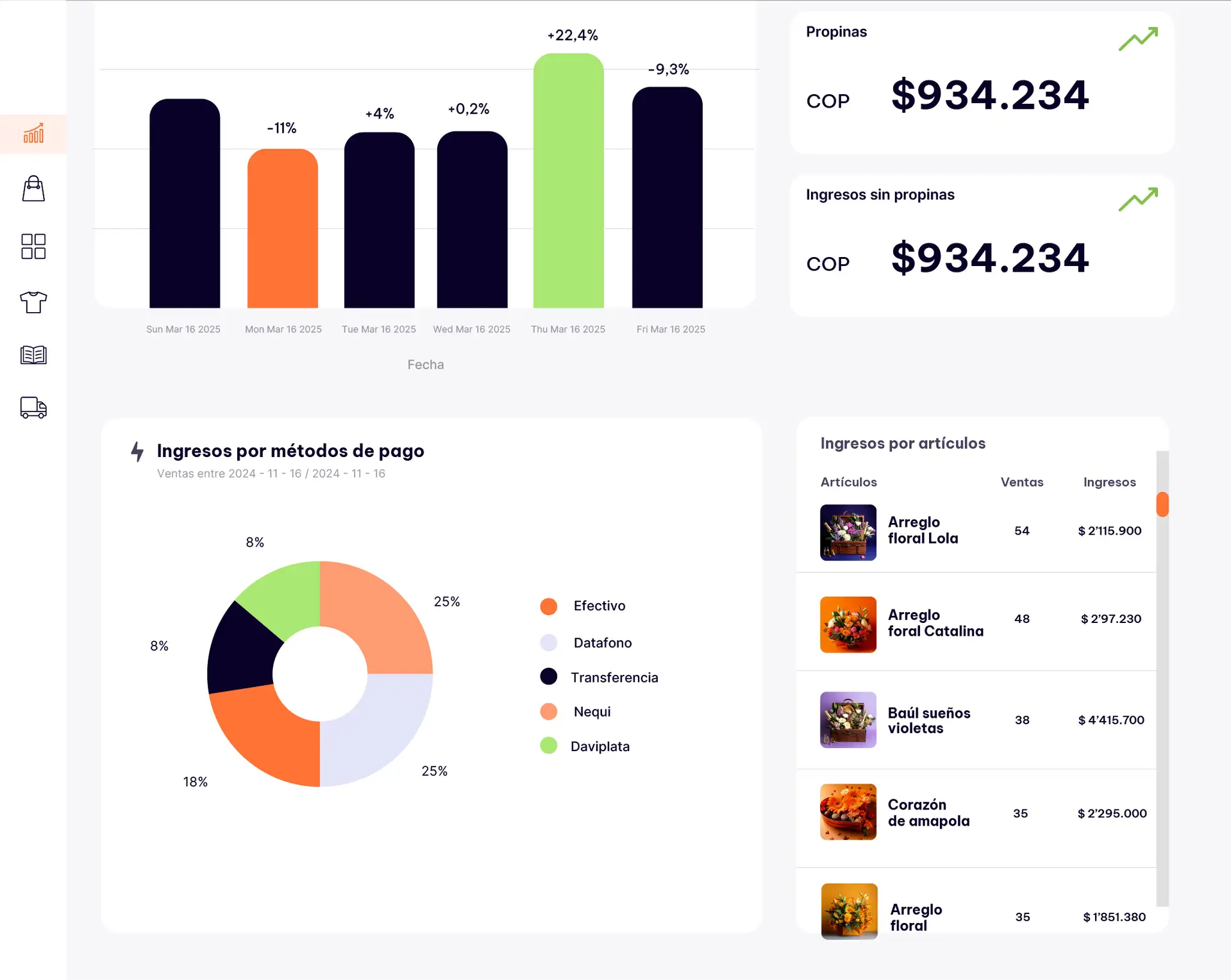Introduction
Picture this: A customer walks into your store looking for a simple white t-shirt. Twenty minutes later, they’re walking out with the t-shirt, a matching cardigan, a statement necklace, and a leather handbag – all with a genuine smile on their face. This isn’t magic; it’s the art of the upsell, and it’s one of the most powerful tools in retail success.
Yet, for many small business owners and retail entrepreneurs, the word “upselling” carries a heavy burden of discomfort. It conjures images of pushy salespeople, reluctant customers, and that sinking feeling that you’re somehow taking advantage of people. If you’ve ever felt this way, you’re not alone. The truth is, when done correctly, upselling isn’t about manipulation – it’s about genuine service, understanding your customers’ needs, and helping them discover solutions they didn’t even know they were looking for.
The reality of modern retail is unforgiving. With razor-thin margins, increasing competition, and customers who can comparison shop with a single tap on their phones, every interaction counts. Your ability to increase the average transaction value isn’t just about boosting profits – it’s about survival and growth in an increasingly challenging landscape. But here’s what most business owners get wrong: they think upselling is about selling more stuff. It’s not. It’s about selling the right stuff to the right person at the right time.
The most successful retailers understand that upselling is an art form that requires skill, empathy, and genuine care for the customer experience. It’s about training your team to become consultants rather than order-takers, to spot opportunities rather than simply process transactions, and to build relationships that extend far beyond a single purchase. When your team masters this art, something magical happens: customers start thanking you for suggesting products they didn’t initially consider, your average transaction values increase naturally, and your team gains confidence that transforms the entire atmosphere of your store.
This transformation doesn’t happen overnight, and it certainly doesn’t happen by accident. It requires intentional training, clear systems, and a fundamental shift in how you and your team think about the sales process. But the investment is worth it. Retailers who successfully implement upselling strategies typically see increases of 20-30% in average transaction values, and more importantly, they create customers who feel genuinely served and are eager to return.
1. Understanding the Psychology Behind Successful Upselling
The foundation of effective upselling lies not in aggressive sales tactics, but in understanding the fundamental psychology of how people make purchasing decisions. When customers enter your store, they’re not just buying products – they’re buying solutions, emotions, and experiences. Your role is to become a trusted advisor who helps them navigate these complex emotional and practical needs.
At its core, successful upselling taps into several key psychological principles. First is the concept of perceived value. Customers don’t just evaluate products based on price; they evaluate them based on the value they perceive they’ll receive. This means that a $50 accessory can feel like a bargain when positioned correctly alongside a $200 main purchase, especially if it solves a problem or enhances the primary product’s functionality.
The principle of social proof also plays a crucial role. When your team mentions that “most customers who buy this also love having…” they’re leveraging the powerful human tendency to follow the behavior of others. This isn’t manipulation – it’s providing valuable context that helps customers make informed decisions. Similarly, the concept of anchoring means that the first price a customer hears influences their perception of all subsequent prices. This is why presenting premium options first can make mid-range alternatives seem more reasonable and accessible.
Perhaps most importantly, successful upselling recognizes that customers often experience what psychologists call “choice paralysis.” When faced with too many options, people tend to choose nothing at all. Your team’s role is to curate and simplify choices, presenting complementary products that make sense within the context of the customer’s initial purchase and stated needs.
Understanding these psychological foundations allows your team to approach upselling from a place of genuine service rather than aggressive selling. When a team member suggests a leather protector for new shoes, they’re not just trying to increase the sale – they’re helping the customer protect their investment. When they recommend a second pair of jeans because “having a backup saves a trip when the first pair is in the wash,” they’re providing practical convenience.
Practical Exercise: Have your team practice identifying the emotional and practical needs behind common purchases in your store. For example, if someone buys workout clothes, their practical need is functionality, but their emotional need might be confidence or motivation. Create a simple chart matching your top 10 products with their practical and emotional benefits, then train your team to address both aspects in their recommendations.
2. Building a Foundation of Trust and Authentic Relationships
Before any upselling technique can be effective, your team must master the art of building genuine rapport and trust with customers. This foundation is non-negotiable because customers can sense insincerity from across the store, and nothing kills an upselling opportunity faster than the perception that they’re being manipulated for the sake of a larger sale.
Trust begins the moment a customer walks through your door. It’s built through body language, tone of voice, and most importantly, through the quality of attention your team gives to understanding the customer’s actual needs. This means training your team to ask thoughtful questions and, more importantly, to listen actively to the answers. When a customer mentions they’re shopping for a wedding, a job interview, or a special occasion, these details aren’t just small talk – they’re valuable insights that inform every subsequent recommendation.
Authentic relationship-building also requires your team to understand when not to upsell. Sometimes the most powerful sales technique is showing restraint. When a customer has a strict budget or clearly states they only need one specific item, respecting those boundaries actually builds more trust than pushing additional products. This counterintuitive approach often leads to customers returning specifically to work with team members who demonstrated such respect and understanding.
The key to authentic relationships is what retail experts call “consultative selling.” Instead of starting with what you want to sell, you start with understanding what the customer wants to achieve. This might mean asking questions like “What’s the occasion?” or “How do you typically like to style this type of piece?” These questions show genuine interest in the customer’s world beyond the immediate transaction.
Training your team in active listening techniques transforms them from sales clerks into retail consultants. This includes teaching them to notice non-verbal cues, to ask follow-up questions that demonstrate they’re paying attention, and to remember details from previous visits. When a team member remembers that Mrs. Johnson was looking for shoes that wouldn’t hurt her feet during long work days, and follows up to ask how the last pair worked out, they’re building the kind of relationship that naturally leads to trust and, subsequently, to successful upselling opportunities.
Another crucial element is teaching your team to share appropriate personal experiences or stories. When a team member mentions they own the same product and loves it for specific reasons, or shares how another customer used a particular item in an unexpected way, they’re building credibility through authentic connection rather than generic sales pitches.
Practical Exercise: Implement a “customer story” practice where team members share one meaningful customer interaction from each shift during team meetings. Focus on examples where listening and genuine interest led to positive outcomes, whether or not they resulted in larger sales. This reinforces the importance of relationship-building and helps team members learn from each other’s experiences.
3. Training Techniques That Actually Work in Real-World Scenarios
Effective upselling training goes far beyond theoretical knowledge – it requires practical, scenario-based learning that prepares your team for the messy, unpredictable reality of retail interactions. The most successful training programs combine role-playing exercises with real-world observation and continuous feedback, creating a learning environment where team members can develop confidence through practice rather than trial-and-error with actual customers.
Start with scenario-based role playing that mirrors your actual customer interactions. Create realistic situations based on your store’s most common transactions, but include the complications that make real retail challenging: customers with limited budgets, those who are in a hurry, skeptical shoppers, and people who have had bad experiences with pushy salespeople in the past. Practice these scenarios until your team can navigate them smoothly, focusing on maintaining genuine helpfulness even when facing resistance.
One particularly effective technique is the “shadow and debrief” method. Have experienced team members shadow newer employees during customer interactions, then immediately debrief afterward to discuss what worked, what could be improved, and what alternative approaches might have been more effective. This real-time learning is far more valuable than abstract training sessions because it deals with actual customer reactions and authentic situations.
Product knowledge training is crucial, but it should go beyond basic features and benefits. Train your team to understand how products work together, which items solve similar problems in different ways, and most importantly, how to match products to customer lifestyles and preferences. This deeper knowledge allows them to make relevant, helpful suggestions rather than generic recommendations.
Develop what retail experts call “transition phrases” – natural ways to introduce additional products without creating pressure. Instead of “Would you like to buy this too?” teach phrases like “Just so you know, most people find this pairs really well with…” or “Something that might be helpful to consider…” These phrases feel consultative rather than sales-focused.
Create product pairing guides that make sense for your specific inventory and customer base. These shouldn’t be rigid scripts, but rather logical combinations that your team can reference and adapt based on individual customer needs. Include the reasoning behind each pairing so team members understand the logic and can explain the benefits naturally.
Training should also address how to handle objections gracefully. When a customer says they don’t need anything else, train your team to acknowledge this respectfully while leaving the door open: “Absolutely, no problem at all. I just wanted to mention it in case it was helpful.” This approach respects the customer’s decision while maintaining a positive interaction.
Practical Exercise: Create monthly “Upselling Olympics” where team members practice different scenarios in a fun, competitive environment. Include categories like “Most Natural Recommendation,” “Best Problem-Solving,” and “Most Creative Pairing.” This makes training enjoyable while reinforcing important skills and building team camaraderie around shared learning goals.
4. Creating Systems and Processes That Support Your Team
Even the most talented and well-trained team members need systematic support to consistently execute effective upselling strategies. Creating clear processes, tools, and systems removes the guesswork from upselling and ensures that every customer receives the same high level of consultative service, regardless of which team member assists them.
Start by developing visual merchandising systems that naturally support upselling opportunities. Strategic product placement can do much of the heavy lifting for your team. Position complementary items near each other, create attractive displays that show products being used together, and use signage that highlights natural pairings or multi-item benefits. When products visually suggest their own combinations, your team’s job becomes much easier.
Implement point-of-sale systems that prompt team members with relevant suggestions based on what’s being purchased. This might be as simple as laminated cards near the register that show common pairings for your top-selling items, or as sophisticated as digital systems that automatically suggest complementary products. The key is making these suggestions easily accessible so team members don’t have to rely solely on memory during busy periods.
Create customer profile systems that help your team remember preferences, previous purchases, and ongoing needs. This doesn’t have to be complicated – even a simple notebook where team members jot down customer preferences can be incredibly powerful. When Mrs. Smith returns and your team member remembers she was looking for comfortable work clothes in navy blue, they can immediately suggest new arrivals that match her preferences.
Develop clear guidelines for when and how to introduce additional products. This might include timing (after the customer has shown satisfaction with their initial selection), context (when the additional product solves a related problem), and quantity (limiting suggestions to avoid overwhelming the customer). Having clear boundaries helps team members feel confident in their approach.
Establish feedback loops that help you continuously improve your upselling systems. This includes tracking which product combinations work best, which team members are most successful at upselling, and most importantly, customer feedback about their experience. When customers mention feeling pressured or, conversely, grateful for helpful suggestions, use this information to refine your approach.
Create recognition systems that celebrate successful upselling while maintaining focus on customer satisfaction. This might mean recognizing team members who receive positive customer feedback about their helpfulness, or those who consistently improve average transaction values while maintaining high customer satisfaction scores. The goal is to reinforce that successful upselling serves customers first and generates sales as a natural result.
Practical Exercise: Conduct a monthly “system audit” where you and your team review what’s working and what isn’t in your upselling processes. Look at sales data, customer feedback, and team member experiences to identify opportunities for improvement. Make small, iterative changes rather than major overhauls, and always test new approaches with a few team members before implementing store-wide changes.
5. Measuring Success and Continuous Improvement
The most successful upselling programs are built on continuous measurement, analysis, and improvement. Without clear metrics and regular evaluation, even the best training and systems can become stale or ineffective over time. Creating a culture of measurement and improvement ensures that your upselling efforts continue to evolve and strengthen.
Start by establishing clear, meaningful metrics that go beyond simple sales numbers. While average transaction value is important, also track customer satisfaction scores, return visit frequency, and qualitative feedback about the shopping experience. The goal is to ensure that increased sales come from genuinely improved customer service rather than aggressive tactics that might work short-term but damage long-term relationships.
Implement regular team performance reviews that focus on skill development rather than just sales results. This might include observing team members during customer interactions, discussing challenging situations they’ve encountered, and identifying areas where additional training or support would be helpful. The best performing team members should be involved in training others, creating a culture where expertise is shared and celebrated.
Create customer feedback systems that specifically address the upselling experience. This might be as simple as asking “Did our team member help you find everything you needed today?” or more detailed surveys that explore whether customers felt pressured or genuinely helped. Pay particular attention to feedback that mentions feeling understood, valued, or grateful for suggestions – these are indicators of effective upselling.
Track product pairing data to understand which combinations work best for your specific customer base and inventory. This information can inform future product selection, staff training focus areas, and merchandising decisions. If certain pairings consistently perform well, make sure all team members know about them and understand the reasoning behind their success.
Establish regular team meetings focused on sharing success stories, discussing challenges, and brainstorming improvements. These sessions should celebrate wins while also addressing areas where the team can grow. Encourage team members to share customer reactions, both positive and negative, and use these experiences as learning opportunities for everyone.
Consider implementing seasonal reviews of your upselling strategies. Customer needs and behaviors change throughout the year, and your approach should adapt accordingly. What works during holiday shopping seasons might be different from what works during back-to-school periods or summer months.
Most importantly, maintain focus on the long-term relationship with customers rather than short-term sales gains. The most successful retailers understand that a customer who feels genuinely served will return multiple times and refer others, creating far more value than any single upselling transaction could generate.
Practical Exercise: Create a simple monthly scorecard that tracks both quantitative metrics (average transaction value, customer return rate) and qualitative indicators (customer feedback themes, team member confidence levels). Review this scorecard with your team each month, celebrating successes and identifying one specific area for improvement in the coming month.
Final Reflection
As you stand at the threshold of transforming your retail operation through the art of upselling, remember that you’re embarking on much more than a sales training initiative. You’re creating a fundamental shift in how your business serves customers, how your team approaches their work, and how your store becomes a destination rather than just a transaction point.
The journey ahead isn’t always easy. There will be days when your team feels awkward suggesting additional products, when customers seem resistant to recommendations, or when you question whether you’re pushing too hard or not hard enough. These moments of uncertainty are not signs of failure – they’re indicators that you’re growing, learning, and refining an approach that will ultimately serve your customers better and strengthen your business.
The most successful retailers understand that mastering the art of upselling is a marathon, not a sprint. It requires patience with the learning process, compassion for both your team and your customers as everyone adapts to new approaches, and persistence in the face of inevitable setbacks. But the rewards – both financial and personal – are profound.
When you implement these strategies consistently and authentically, you’ll witness transformations that go far beyond increased sales numbers. You’ll see team members gain confidence as they develop genuine expertise in helping customers. You’ll watch customer relationships deepen as people begin to trust your team’s recommendations and return specifically to seek their advice. You’ll experience the satisfaction that comes from building a business that truly serves its community while achieving financial success.
Your customers are already spending money on the products and services you recommend – they’re just spending it elsewhere because no one has shown them how these items connect to their needs and desires. Your role isn’t to create needs that don’t exist, but to uncover and address needs that are already there. When you approach upselling from this perspective of genuine service, the resistance melts away and customers become partners in creating solutions that work for their lives.
The retail landscape will continue to evolve, and new challenges will emerge. But businesses built on authentic relationships, genuine service, and skilled teams will not only survive these changes – they’ll thrive. The investment you make today in training your team to master the art of upselling is an investment in the long-term sustainability and growth of your business.
Don’t wait for the perfect moment or the perfect system. Start with what you have, implement what you can, and improve as you go. Your customers need what you have to offer, and they deserve the kind of thoughtful, consultative service that skilled upselling provides. The only question is whether you’ll be the one to provide it, or whether they’ll find it somewhere else.
The art of the upsell isn’t really about selling at all – it’s about serving so well that increased sales become the natural, inevitable result. Begin today, start small, stay consistent, and watch as both your business and your customers’ experiences transform in ways you never thought possible.





